Tate Britain
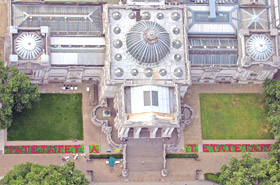
Tate Britain is the national gallery of British art. Located in London, it is one of the family of four Tate galleries which display selections from the Tate Collection. The other three galleries are Tate Modern, also in London, Tate Liverpool, in the north-west, and Tate St Ives, in Cornwall, in the south-west.
Tate Britain is the world centre for the understanding and enjoyment of British art and works actively to promote interest in British art internationally. The displays at Tate Britain call on the greatest collection of British art in the world to present an unrivalled picture of the development of art in Britain from the time of the Tudor monarchs in the sixteenth century, to the present day.
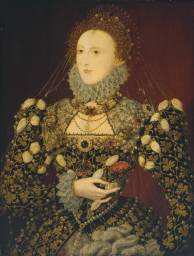
The Collection
The Collection comprises the national collection of British art from the year 1500 to the present day, and international modern art. Some of the highlights of the Tate collection of British art include rich holdings of portraiture from the age of Queen Elizabeth I; of the work of William Hogarth, sometimes called the father of English painting; of the eighteenth-century portraitists Gainsborough and Reynolds; of the animal painter George Stubbs; of the artists of the Pre-Raphaelite Brotherhood who revolutionised British art in the nineteenth century; and in the twentieth century of the work of Stanley Spencer, Henry Moore, Barbara Hepworth, Francis Bacon and the Young British Artists (YBAs) of the 1990s. The very latest contemporary art is presented through the Art Now programme and the annual Turner Prize exhibition.
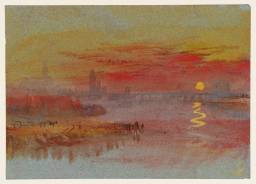
Blake, Turner, Constable
Special attention is given to these three outstanding British artists from the Romantic age. Blake and Constable have dedicated spaces within the gallery, while the unique Turner Collection of about 300 paintings and many thousands of watercolours is housed in the specially built Clore Gallery. See Turner Online for more information on Turner.
The History of Tate at Millbank
Tate Britain, situated on Millbank in London, was formerly known as the Tate Gallery, which was specially commissioned in 1894 to be the national gallery of British art, and opened to the public in 1897. A brief history of the site's evolution is outlined below.
Having offered his art collection to the nation, Henry Tate later offered a gallery to house it providing the government would donate a site and undertake the administration. After much debate, Tate's offer is accepted. The site of Millbank Penitentiary, a huge prison facing the Thames at Millbank is chosen. The prison is demolished and three acres of the site allocated to the new gallery.
The first stage of the building programme, consisting of the front facade, an entrance hall under a rotunda and seven galleries, is designed by Sidney R J Smith. It is completed and opened in 1897. Plans for the second stage, also provided by Sir Henry Tate (he was knighted in 1898), are displayed at the gallery's opening. In 1899 nine galleries - the second stage - are added to the original building. Further additions to the site are made in 1909, designed by W H Romaine Walker. The 1909 extension, developed to house the Turner Collection, is paid for by the connoisseur Joseph Duveen.
In 1917, Tate is given a new responsibility - to form the national collection of international modern art. New galleries for the modern international collection are built by Sir Joseph Duveen's son, later Lord Duveen, and opened in 1926. The artist Rex Whistler (1905-45) is commissioned to produce a series of murals for the restaurant. These are completed and unveiled in 1927. In 1937 Lord Duveen builds the great central sculpture galleries, designed by J Russell Pope and Romaine Walker. This development introduces the domed octagon, intended to emphasise the centre of the building and open up a central vista that continues the axial route provided by the entrance.
By this time in the development of the Millbank site, three quadrants of the building had been designed. The rectangular site has been three quarters filled, each quarter built around a courtyard unseen from within the galleries. A new north-east extension, by Llewellyn Davies, Weeks, Forestier-Walker and Bor is added in 1979. This fills in the final quarter of the original rectangular site and is designed not around a courtyard but to a solid plan.
Tate now expands onto the site of the adjacent disused Queen Alexandra Hospital. In 1987 the Turner Collection is re-housed in the purpose-built Clore Gallery, given by the Clore Foundation and designed by the distinguished British architect Sir James Stirling.
In December 1992, the Tate Trustees announce their intention to divide displays of the Collection in London between two sites: a gallery for international modern and contemporary art, later named Tate Modern, and a gallery to be devoted to British art from 1500 to the present day, occupying the whole of Tate's building at Millbank, later named Tate Britain.
In 1994, a refurbishment of the Clore Gallery is financed by the Clore Foundation.
In 1997, Tate announces that it is now to take forward plans to upgrade and develop the Millbank building. This major scheme will be called the Centenary Development. John Miller + Partners are announced as scheme architects, with external improvements and landscaping by Allies and Morrison. In 1998, building work begins on the Centenary Development. On 24 March 2000 Tate Britain opens to the public and remains fully operational as parts of the building are closed off for works during the Centenary Development.
On 1 November 2001, the Centenary Development opened to the public.
Tate Britain's spaces and facilities have been expanded and upgraded to allow the public to enjoy the Millbank building as never before.
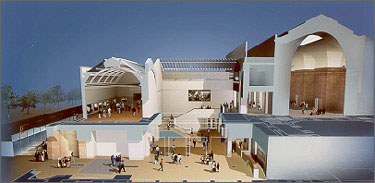
Centenary Development
The opening of the Tate Centenary Development on 1 November 2001 completes the launch of Tate Britain, begun in March 2000. The Development was announced in 1997 - the Centenary year of the Tate Gallery, as it was previously known. It provides Tate Britain with ten new and five refurbished galleries as well as the dramatic new Manton Entrance on Atterbury Street providing visitors with full access, new visitor information points, a cloakroom, toilets and a shop.
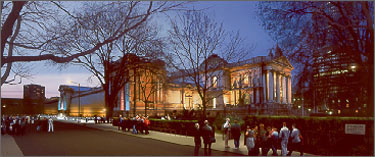
The architects John Miller + Partners have ensured that the new and refurbished spaces and other visitor facilities beautifully enhance one of London's great public galleries. Equally the landscape architects Allies and Morrison have made certain that the new public space around the building creates a sensitive environment which also enhances access for visitors. The gallery has remained open while all this work has been carried out.
With the creation of Tate Modern and Tate Britain the original Tate building on Millbank has been able to revert to its original remit of housing the national collection of British art, from 1500 to the present day. Henry Tate's vision of a national gallery devoted exclusively to the national school has now finally been fully realised. The new and refurbished galleries have dramatically enlarged the space available at Tate Britain to show works from the collection, as well as allowing the gallery to present an unprecedented programme of exhibitions and educational initiatives on themes connected to British art, in all its aspects, both historic and contemporary.